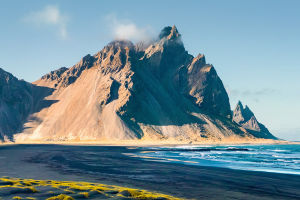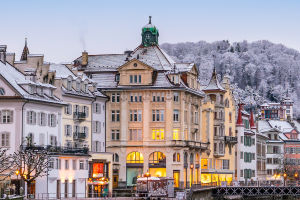
Iceland, often referred to as the "Land of Fire and Ice," is a dream destination for nature lovers and adventure seekers alike. From erupting volcanoes and stunning glaciers to unique geothermal hot springs, Iceland offers some of the most captivating landscapes on Earth.
In this detailed guide, we’ll provide all the specific information you need, including ticket prices, best times to visit, transportation tips, and more, so you can plan your Icelandic adventure with ease.
Best Time to Visit Iceland
The best time to visit Iceland truly depends on what you want to experience. For those hoping to catch a glimpse of the spectacular Northern Lights, winter (from late September to March) is the optimal time. During these months, the long nights and dark skies offer the best chance to see this mesmerizing natural phenomenon. If hiking and outdoor activities are more your style, the summer months (from June to August) are perfect, with longer daylight hours and milder temperatures.
- Northern Lights Season: September to March
- Hiking and Summer Activities: June to August
- Midnight Sun: Late May to July (24 hours of daylight in some regions)
Transportation: Getting Around Iceland
To explore Iceland in all its glory, renting a car is highly recommended, especially if you're planning to venture into rural areas or explore the famous Golden Circle. This route, a must-see for first-time visitors, connects Reykjavik to major sites like Thingvellir National Park, Gullfoss Waterfall, and Geysir Hot Springs. Renting a car gives you flexibility and the ability to stop at picturesque locations along the way.
Car Rentals: Rental prices vary, but expect to pay between $40-$100 per day, depending on the season and car type.
- Public Transportation: Iceland’s bus network is reliable, with services connecting major cities and popular tourist spots. The Reykjavik Excursions Bus - Pass costs around $30 USD for a day of unlimited travel.
- Domestic Flights: For quicker travel between cities, Icelandair offers domestic flights for as low as $70 USD one-way.
Top Attractions and Ticket Prices
Iceland is packed with natural wonders, and here are some of the top attractions to include on your itinerary, complete with ticket prices and opening hours:
1. The Golden Circle
- Key Stops: Thingvellir National Park, Gullfoss Waterfall, Geysir Hot Springs
- Ticket Prices: Most sites are free to visit, but some charge for parking (around $5-$10 USD).
- Opening Hours: Open year-round; best visited from 9 AM to 6 PM.
- Transportation: You can explore this route via car, guided tours, or public buses.
2. Blue Lagoon
- Description: A world-famous geothermal spa located in a lava field near Reykjavik.
- Ticket Prices: Prices start at $65 USD for entry, with packages including towels, drinks, and face masks available for $100-$150 USD.
- Opening Hours: 8 AM to 10 PM (varies by season).
- Tip: It’s best to book tickets in advance, especially during peak tourist seasons.
3. Jökulsárlón Glacier Lagoon
- Description: A stunning glacier lagoon filled with floating icebergs.
- Ticket Prices: Free to visit; boat tours available for around $50 USD per person.
- Opening Hours: Open year-round; best visited in summer for boat tours.
- Tip: If you visit in winter, you may also see ice caves nearby.
4. Reykjavik
- Description: Iceland's capital is small but vibrant, with interesting museums, shops, and cafés.
- Top Sites: Hallgrímskirkja, Harpa Concert Hall, National Museum of Iceland.
Ticket Prices:
- Hallgrímskirkja: $10 USD for entry to the tower.
- National Museum of Iceland: $20 USD for adult admission.
- Opening Hours: Most attractions in Reykjavik are open from 10 AM to 5 PM.
- Tip: Take a walking tour of the city, which can be booked for around $40 USD.
What to Pack for Your Iceland Adventure
Iceland's weather can be unpredictable, even in the summer, so it’s important to pack accordingly. Here are a few essential items to bring on your trip:
- Layered Clothing: Be sure to pack moisture-wicking base layers, a warm mid-layer (fleece or down), and a waterproof outer layer to protect you from wind and rain.
- Sturdy Hiking Boots: A must-have for exploring Iceland's rugged landscapes.
- Waterproof Gear: Given the frequent rain and wind, a waterproof jacket and pants are essential.
- Sunscreen: Even though it’s cold, the UV rays in Iceland can be strong, particularly in the winter.
Useful Tips for Exploring Iceland
1. Respect Nature: Iceland’s nature is fragile, and it’s important to stick to marked paths and follow local guidelines to protect the environment.
2. Currency: The Icelandic króna (ISK) is the currency, but most places accept credit cards. It’s a good idea to carry a small amount of cash for rural areas.
3. Internet Access: Wi-Fi is widely available in Reykjavik and most accommodations, but in remote areas, it may be limited. Consider purchasing a SIM card for mobile data.
4. Book in Advance: Popular attractions like the Blue Lagoon and guided tours can sell out quickly, so it’s best to book tickets well in advance, especially during peak seasons.
Iceland Awaits
Iceland is a land of mesmerizing landscapes, from its stunning glaciers to the magical Northern Lights. The country’s natural wonders offer endless opportunities for adventure, making it a perfect destination for those seeking both beauty and excitement. With all the essential information provided, you can now confidently explore Iceland’s top attractions, enjoy its unique experiences, and create unforgettable memories.
Lykkers, it’s time to start your journey! Pack your bags, embrace the adventure, and let Iceland’s breathtaking scenery captivate you!
Iceland Vacation Travel Guide | Expedia
Video by Expedia


